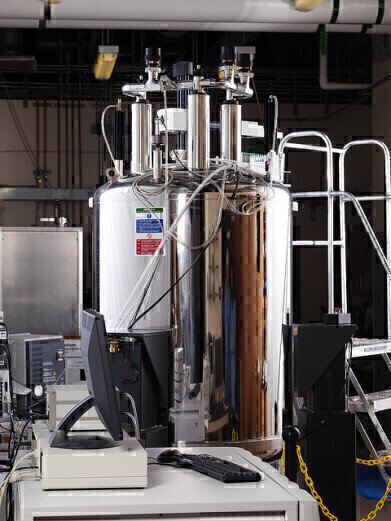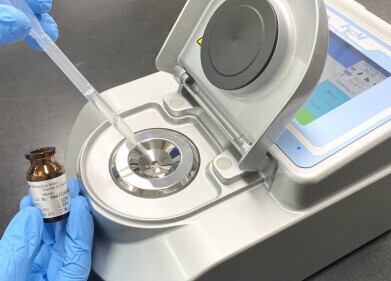Laboratory Products
What is NMR?
Aug 18 2014
Nuclear Magnetic Resonance (NMR) is part of the spectroscopy family of analytical techniques alongside mass spectroscopy, ultraviolet (UV) and infrared (IR) spectroscopy. Spectroscopic analysis relies on a molecule’s interaction with electromagnetic radiation to generate a measurable output.
Nuclear
In NMR it is the nuclei of the atoms making up the molecule that interact with the electromagnetic radiation. To understand NMR it helps to model the nucleus as a small bar magnet. This is not too strange as the nucleus has some magnetic properties, especially in a magnetic field.
Magnetic
NMR uses the magnetic properties of the nucleus under consideration to help determine a molecule’s structure. The commonest nuclei used in NMR are hydrogen nuclei, 1H, a proton with no neutron. This is known as 1H NMR.
In a magnetic field, the nuclei are:
- aligned with the field (low energy state), or
- non-aligned with the field (high energy state).
The energy difference between the aligned and the non-aligned nuclei is proportional to the applied magnetic field strength. A proton placed in an applied magnetic field will have a fixed energy difference between the aligned and non-aligned states, known as the band gap.
Resonance
It is possible to make the proton in the low energy state flip to the higher energy state. This happens if the proton is supplied with exactly the same energy as the band gap between the states. When the proton flips, this is known as the resonance condition.
How does NMR work?
In NMR, a sample is placed in an applied magnetic field. The applied field creates the band gap. A second field at radio frequencies (RF) is then applied to the sample — this field supplies the energy to allow the protons to flip.
By varying the applied field, and hence the band gap, the protons can be brought into the resonance condition. Consequently, protons flip from aligned to non-aligned state and this is detected.
But if the sample is a molecule containing protons, the nuclei and electrons around the protons will affect how much of the applied field a proton feels.
These environmental changes produce small differences in the energy gaps between the aligned and non-aligned states. Because of the slight environmental differences, the applied field strength needed to bring the protons into resonance is different. It is these differences that allow the structure to be determined.
NMR traces
An NMR trace consists of a series of peaks along a baseline.
The position of a peak on the baseline, its chemical shift, is due to the environment of the proton. For example, is the proton in a methyl group (-CH3) or an aldehyde (-CH2OH). Each functional group has its own indicative chemical shift.
The relative areas under the peaks shows how many equivalent protons are in a particular environment. For example the three hydrogen nuclei in a methyl group (-CH3) are equivalent.
If you are interested in learning more about NMR, this article, Putting NMR in the Hands of the Undergraduate Chemistry Student, looks at the response of universities and students to a new benchtop NMR solution.
Image Source
Digital Edition
Lab Asia 31.2 April 2024
April 2024
In This Edition Chromatography Articles - Approaches to troubleshooting an SPE method for the analysis of oligonucleotides (pt i) - High-precision liquid flow processes demand full fluidic c...
View all digital editions
Events
Apr 28 2024 Montreal, Quebec, Canada
May 05 2024 Seville, Spain
InformEx Zone at CPhl North America
May 07 2024 Pennsylvania, PA, USA
May 14 2024 Oklahoma City, OK, USA
May 15 2024 Birmingham, UK






.jpg)











